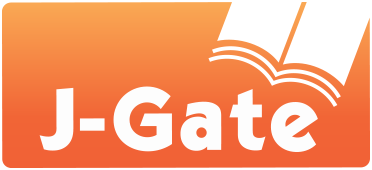Utilizing Vocabulary Word Mapping as a Remediation Strategy in Improving Vocabulary Level among Grade 6 – Newton Students
DOI:
https://doi.org/10.54855/acoj.231426Keywords:
vocabulary development, Filipino, vocabulary learning, vocabulary strategy, word mappingAbstract
In the framework of language development, the alignment of the curriculum to the learning domains funneled the essential contribution of vocabulary development in language learning for both Filipino and English in the Philippines. This study is a response to the intertwining problems regarding the vocabulary level of the learners and language learning, particularly in the Filipino subject. This quantitative study explored the effectiveness of utilizing the vocabulary word mapping strategy as a remediation strategy in improving learners’ vocabulary levels in the Filipino subject to thirty-eight (38) grade six students. The data revealed that the vocabulary word mapping strategy is effective based on the improvement of the learners’ scores from pretest to posttest. Furthermore, the study suggested that educational institutions should explore more vocabulary learning strategies that teachers may employ in their teaching that may lead to the opportunity for learners to strengthen their vocabulary skills in the Filipino language.
References
Abate, L., & Tefera, Y. (2015). The role of semantic mapping strategy training on students’ EFL vocabulary development. Ethiop. J. Educ. & Sc., Vol. 11, No 1, 13-19.
Abuga, R. S. C. ., Brillantes, J. A. ., Dialino, C. P. ., Lucañas, R. L. M. ., Molina, H. M. S. ., & Tandoc, D. A. . (2019). Effectiveness in using English as a medium of instruction among grade 12 students at Bestlink College of the Philippines. Ascendens Asia Singapore – Bestlink College of the Philippines Journal of Multidisciplinary Research, 1(1), 181-187. Retrieved from https://ojs.aaresearchindex.com/index.php/aasgbcpjmra/article/view/1222
Afzal, N. (2019). A study on vocabulary-learning problems encountered by BA English majors at the university level of education. Arab World English Journal, 10 (3), 81-98. DOI: https://dx.doi.org/10.24093/awej/vol10no3.6
Al-Dulaimi, A. (2022). The Impact of Word Map Activities on Primary School Students’ Vocabulary Achievement. [Master’s Thesis, Karabuk Universitesi]. http://acikerisim.karabuk.edu.tr:8080/xmlui/handle/123456789/2048
Ali, Z. & Bhaskar, S. B. (2016). Basic statistical tools in research and data analysis. Indian Journal of Anaesthesia. 2016 Sep; 60(9), 62–669. DOI: 10.4103/0019-5049.190623
Altalhab, S. (2018). Short- and long-term effects of repetition strategies on vocabulary retention. Advances in Language and Literary Studies, 9(2), 146-149.
Bintz, W. (2011). Teaching vocabulary across curriculum. Middle School Journal. pp. 44-53. National Middle School Association, Illinois, USA. Print.
Butler, S., Urrutia, K., Buenger, A., Gonzalez, N., Hunt, M., & Eisenhart, C. (2010). A Review of the Current Research on Vocabulary Instruction. National Reading Technical Assistance Center, RMC Research Corporation. pp. 1-7. U.S. Department of Education. Retrieved February 7, 2023 from https://www2.ed.gov/programs/readingfirst/support/rmcfinal1.pdf
Cowan, G. (1998). Statistical Data Analysis. Oxford Science Publications, New York, United States of America. Retrieved from https://www.sherrytowers.com/cowan_statistical_data_analysis.pdf
Cristobal, J. (2022). Improving the grade 8 students’ vocabulary skill through localized game-based activities. American Journal of Arts and Human Science, 1(2), 40–45. https://doi.org/10.54536/ajahs.v1i2.321
Dougherty Stahl, K.A., & Bravo, M.A. (2010). Contemporary Classroom Vocabulary Assessment for Content Areas. The Reading Teacher, 63 (7), 566–578. doi: 10.1598/RT.63.7.4
Faustino, J. & Hiwatig, A. D. (2012). Special science elementary school: Project and prospects for gifted education in the Philippines. Japan Society for Science Education, Vol.(36), No. (2), 131-141.
Hakim, L. (2018). Improving students’ vocabulary through word mapping technique. Advances in Social Science, Education and Humanities Research. Vol. 257, 153-156. Atlantic Press. Retrieved February 2, 2023 from https://www.atlantis-press.com/proceedings/icollite-18/55915090
Hanson, S. & Padua, J. (2011). Teaching Vocabulary Explicitly. Effective Instructional Strategies Series. pp. 5-8. Pacific Resources for Education and Learning (PREL).
Humaira & Fatimattuzahro. (2015). The effectiveness of using word mapping technique to increase student vocabulary. Linguistics and Elt Journal. 3. 1, 1-10 DOI: https://doi.org/10.31764/leltj.v3i1.531
Huszti, I. (2022). Glossary on language teaching and learning (2nd ed.). Genius Charity Foundation, Berehove
Kai, T., & Hua, T. (2021). Enhancing English language vocabulary learning through Google Translate mobile application among indigenous learners. Journal of Education and e-Learning research, 8(2), 43-148.
Kandel, R. (2011). Experimental research design: A play of variables. Journal of Nepal English Language Teachers’ Association (NELTA) Surkhet. Vol. 2. 32-52.
Lapus, J.A. (2009). DepED allots funding for special science school. Pasig City: Department of Education
Limos, M. (2019). Goodbye, Filipino? National Language Stricken From College Curriculum. Esquire Philippines.
Malik, T. & Alam, R. (2019). Comparative analysis between pretest/posttest model and post-test-only model in achieving the learning outcomes. Pakistan Journal of Ophthalmology. Vol. 35, No. 1, 4-8.
Marianca, J. S., Liando, N. V. F., & Mamentu, A. C. (2022). Improving students’ vocabulary through words mapping strategy at SMP Negeri 6 Tondano. JoTELL : Journal of Teaching English, Linguistics, and Literature, 1(8), 897-911. https://doi.org/10.36582/jotell.v1i8.4366
McKeown, M. (2019). Effective vocabulary instruction fosters knowing words, using words, and understanding how words work. Language, Speech, and Hearing Services in Schools, Vol. 50, 466–476.
Melegrito, M. C. (2022). The use of Filipino and English as mediums of instruction in the teaching of engineering courses at the tertiary level. European Online Journal of Natural and Social Sciences 2022; Vol.11, No. 3, pp. 668-678
Mitchell, O. (2016). Experimental research design. The Encyclopedia of Crime and Punishment. Vol. 1, 1-6 DOI: 10.1002/9781118519639.wbecpx113
Ng, Y. S., & Ranti, A. T. (2022). The Effects of MS PowerPoint on Students at a Malaysian University in the English for Professionals (EFP) Classrooms. AsiaCALL Online Journal, 13(4), 32-43. https://doi.org/10.54855/acoj.221343
Organization for Economic Cooperation and Development. (2019). Programme for International Student Assessment (PISA) Results from PISA 2018. OECD. Retrieved February 4, 2023, from https://www.oecd.org/pisa/publications/PISA2018_CN_PHL.pdf
Owens, B.K. (2006). The language of mathematics: Mathematical terminology simplified for classroom use. [Master’s Thesis, East Tennessee State University]. Paper 2242. https://dc.etsu.edu/etd/2242
Qomariyah, S., & Nafisah, B. (2020). Word mapping in students’ vocabulary mastery. Jo-ELT (Journal of English Language Teaching) Fakultas Pendidikan Bahasa & Seni Prodi Pendidikan Bahasa Inggris IKIP, 7(1), 31-40. doi:https://doi.org/10.33394/jo-elt.v7i1.273
Riback, J. (2018). Meaningful vocabulary instruction: Bridging the way to comprehension. Unpublished Certificate of Advanced Study Thesis, Sacred Heart University, Fairfield, CT. Retrieved February 2, 2023 from http://digitalcommons.sacredheart.edu/lit/8/
Saavedra, A. & Barredo, C. (2020). Factors that contribute to the poor writing skills in Filipino and English of the elementary pupils. International Journal of Innovation, Creativity and Change. Vol. 14 (5), 1090-1106. Retrieved February 5, 2023 from IJICC Database https://www.ijicc.net/images/Vol_14/Iss_5/14567_Saavedra_2020_E_R.pdf
Secuya, C., & Abadiano, M. (2022). Embracing the new normal set-up from modular to face-to-face learning: A grounded theory. Journal of Positive School Psychology 2022, Vol. 6, No. 5, 8250-8264.
Sharakhimov, S. & Nurmukhamedov, U. (2021). Assessing Learners’ Productive Vocabulary Knowledge: Formats and Considerations. English Teaching Forum.
Sirisilla, S. (2023). Experimental Research Design — 6 mistakes you should never make! Enago Academy. https://www.enago.com/academy/experimental-research-design/
Skidmore, S. (2008). Experimental Design and Some Threats to Experimental Validity: A Primer. Texas A&M University. ERIC. Retrieved February 8, 2023 from ERIC Database. https://files.eric.ed.gov/fulltext/ED499991.pdf
Smith, S. (2020). Using word lists. EAP Foundation. Retrieved from https://www.eapfoundation.com/vocab/wordlists/
Solpico, G. (2019). Performance of senior high school students in the macro skills in English in Itlugan National High School. Ascendens Asia Journal of Multidisciplinary Research Abstracts, Vol. 3, No. 2G, 182-187. https://ojs.aaresearchindex.com/index.php/AAJMRA/article/view/6131
Sunalini, S. & Kumari, C. (2018). Enriching the vocabulary of E.S.L learners: A case study. International Journal of English Language, Literature in Humanities. Vol. 6 (11). 514-537. Retrieved January 29, 2023 from https://www.researchgate.net/publication/338645748_Enriching_the_Vocabulary_of_ESL_learners_A_Case_Study
Tate, M. (2007). Engage the Brain: Graphic Organizers and Other Visual Strategies Science, Grades 6–8. 978-1-4129-5232-3. Corwin Press.
Vu, T. B. N. (2022). Application of technology in teaching and learning at the University - Opportunities and challenges for lecturers and students in Vietnam today. AsiaCALL Online Journal, 13(5), 100–111. https://doi.org/10.54855/acoj.221357
Wallace, T., Stariha, W., & Walberg, H. (2004). Teaching, speaking, listening and writing [Booklet]. Brussels, Belgium: International Academy of Education (IAE). Retrieved from ERIC https://files.eric.ed.gov/fulltext/ED495377.pdf
You, Y. (2011). Factors in vocabulary acquisition through reading. INTESOL Journal, Vol. 8, No. 1, 43-57. Retrieved from https://journals.iupui.edu/index.php/intesol/article/view/15524
Downloads
Published
How to Cite
Issue
Section
License
Copyright (c) 2023 Rewel D. Villaganas

This work is licensed under a Creative Commons Attribution 4.0 International License.
License
Authors retain copyright and grant the journal the right of first publication with the work simultaneously licensed under a Creative Commons Attribution 4.0 International License that allows others to share the work with an acknowledgment of the work's authorship and initial publication in this journal.
Authors are able to enter into separate, additional contractual arrangements for the non-exclusive distribution of the journal's published version of the work (e.g., post it to an institutional repository, in a journal or publish it in a book), with an acknowledgment of its initial publication in this journal.
Authors are permitted and encouraged to post their work online (e.g., in institutional repositories or on their website) prior to and during the submission process.
Copyright
The copyright of all articles published in the acoj remains with the Authors, i.e. Authors retain full ownership of their article. Permitted third-party reuse of the open access articles is defined by the applicable Creative Commons (CC) end-user license which is accepted by the Authors upon submission of their paper. All articles in the acoj are published under the CC BY-NC 4.0 license, meaning that end users can freely share an article (i.e. copy and redistribute the material in any medium or format) and adapt it (i.e. remix, transform and build upon the material) on the condition that proper attribution is given (i.e. appropriate credit, a link to the applicable license and an indication if any changes were made; all in such a way that does not suggest that the licensor endorses the user or the use) and the material is only used for non-commercial purposes.











